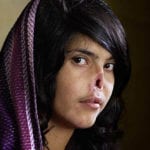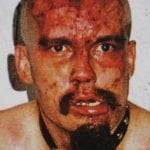 Weird Stuff
Weird Stuff  Weird Stuff
Weird Stuff  Our World
Our World 10 Ways Your Christmas Tree Is More Lit Than You Think
 Movies and TV
Movies and TV The 10 Coolest Stars to Set Sail on The Love Boat
 History
History 10 Things You Didn’t Know About the American National Anthem
 Technology
Technology Top 10 Everyday Tech Buzzwords That Hide a Darker Past
 Humans
Humans 10 Everyday Human Behaviors That Are Actually Survival Instincts
 Animals
Animals 10 Animals That Humiliated and Harmed Historical Leaders
 History
History 10 Most Influential Protests in Modern History
 Creepy
Creepy 10 More Representations of Death from Myth, Legend, and Folktale
 Technology
Technology 10 Scientific Breakthroughs of 2025 That’ll Change Everything
 Weird Stuff
Weird Stuff Ten Bizarre Facts About The Doge Meme
 Our World
Our World 10 Ways Your Christmas Tree Is More Lit Than You Think
 Movies and TV
Movies and TV The 10 Coolest Stars to Set Sail on The Love Boat
Who's Behind Listverse?

Jamie Frater
Head Editor
Jamie founded Listverse due to an insatiable desire to share fascinating, obscure, and bizarre facts. He has been a guest speaker on numerous national radio and television stations and is a five time published author.
More About Us History
History 10 Things You Didn’t Know About the American National Anthem
 Technology
Technology Top 10 Everyday Tech Buzzwords That Hide a Darker Past
 Humans
Humans 10 Everyday Human Behaviors That Are Actually Survival Instincts
 Animals
Animals 10 Animals That Humiliated and Harmed Historical Leaders
 History
History 10 Most Influential Protests in Modern History
 Creepy
Creepy 10 More Representations of Death from Myth, Legend, and Folktale
 Technology
Technology 10 Scientific Breakthroughs of 2025 That’ll Change Everything
10 of the Richest and Most Powerful Female Crime Lords Ever
The overwhelming majority of famous crime lords and drug barons are male. However, history is ripe with female masterminds who have led hugely successful and savage organizations with just as much impunity as men.
10Gertrude Lythgoe
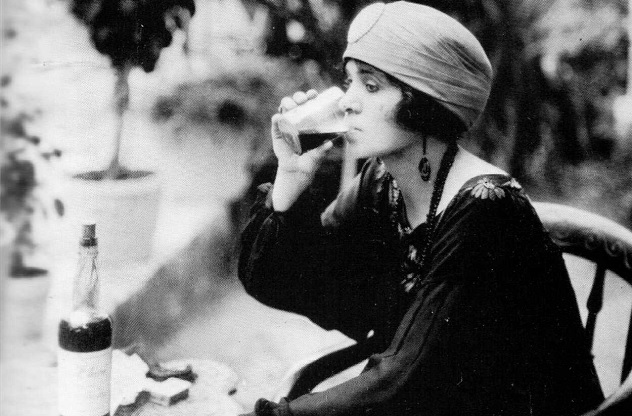
Gertrude Lythgoe is one of the only women to ever operate an alcohol bootlegging ring during the male-dominated Prohibition Era. Records show that the amount of liquor being exported to the United States from the Bahamas grew from 47,300 liters (12,500 gal) in 1917 to 950,000 liters (250,000 gal) in 1923. Bootleggers like Lythgoe were a huge reason why.
Lythgoe would enter the bootlegging business when she met a London liquor exporter. Feeling the pinch in his pockets from the ban of liquor in America, he realized that he could more easily import liquor from Nassau, Bahamas, to the United States. Lythgoe opened up a liquor wholesale shop in Nassau, and the profits poured in.
She found people to be quite skeptical of her since she was a woman. However, they could not argue with her prices, savvy, and business acumen. Her success eventually earned her the nickname “The Bahama Queen.”
One would-be competitor made the mistake of throwing mud at her name and bad-mouthing her product. She kidnapped him from a barbershop while he was getting a shave, pulled a gun on him, and threatened his life should he ever talk badly of her liquor again. She never received another complaint.
She was eventually arrested in New Orleans and charged with smuggling 1,000 cases of liquor into the city. However, the charges were soon dropped. Lythgoe would later leave the bootlegging business and settle in Los Angeles, where she passed away at 86.
9Jemeker Thompson

Jemeker Thompson came from very poor beginnings and was even evicted from her home as a young child. An extreme fear of poverty and feelings of desperation propelled her into the drug trade.
Being young, inexperienced, and a woman made her an easy target in the deadly Los Angeles cocaine trade. She met an older man named Anthony Mosley, who took her under his wing. Together, they made a formidable team (and couple, eventually getting married and having a son).
Although the profits for cocaine were consistent, a new drug soon began sweeping through Los Angeles and turning people rich almost overnight—crack. The pair switched from cocaine to crack trafficking and became some of the biggest players on the Los Angeles scene.
They also made some mighty dangerous enemies along the way. One day, while washing his car, Mosley was shot and killed in cold blood. Though Thompson was saddened and alone, she would continue to traffic drugs through Los Angeles, making hundreds of thousands of dollars.
She continued making bigger connections in the Los Angeles scene and eventually met a man who called himself “Cheese.” He would help her continue to grow her empire. Things were going well until Cheese got arrested and shamelessly ratted out his partner.
Having no other choice, Jemeker went on the run, leaving Los Angeles for five years without being apprehended. She would return to Los Angeles for her son’s 6th-grade graduation only to be promptly arrested by authorities at the ceremony. Imprisoned for 15 years in a maximum-security prison, she found peace in religion. Upon her release, she started her own ministry, which she still runs to this day.
8Thelma Wright

Thelma Wright was just a normal Catholic girl before she met her future husband, Jackie Wright, a wholesale heroin supplier in the bountiful Philadelphia drug scene. They fell in love in a whirlwind romance, got married, and had a son in 1982.
Jackie had ties to the Black Mafia—a feared Philadelphia street gang infamous for murdering police. This made him a very powerful man who also earned himself a few very dangerous enemies. In 1986, Jackie was found rolled up in a rug with a bullet in his head. Thelma was suddenly left all alone to fend for herself and her four-year-old son. Forcing herself into her husband’s business, she became the primary source of heroin and cocaine in Philadelphia. She would even transport the drugs cross-country to Los Angeles.
At her peak, Wright was estimated to earn over $400,000 a month. This granted her high levels of respect among her male contemporaries and nicknames like “Boss Lady” and “Queen Pen.” But it was by no means a glamorous fairy tale. In July 1991, after years of avoiding the darker side of the drug business, she and her friends were caught in the crossfire of a deadly shootout at a Philadelphia nightclub.
Later that year, a member of her major clientele got arrested trying to transport cocaine by mail through the United States Postal Service. Thelma wisely saw the warning signs, and she decided to leave drugs behind before greed got her arrested or killed. She kept a low profile for more than a decade before publishing her life story, With Eyes From Both Sides—Living My Life In and Out of the Game.
Today, Thelma Wright is a motivational speaker who strongly advises nobody to follow in her footsteps and avoid the drug game completely. Said Wright, “It is a ‘no win.’ Two options: death or jail. That’s it.”
7Marllory Dadiana Chacon Rossell
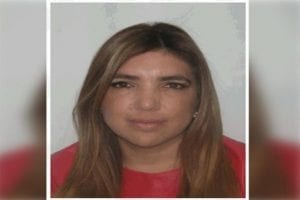
Marllory Dadiana Chacon Rossell was one of the most powerful people in the Latin drug world. She was accused of leading one of the largest drug trafficking rings in Central America and being the largest active money launderer in Guatemala, where the local press dubbed her “The Queen of the South.”
Chacon was responsible for regularly transporting thousands of pounds of cocaine from Guatemala into the United States. However, her real specialty was money laundering. She is estimated to have completed transactions exceeding tens of millions of dollars in dirty money each month.
Trying to mask the large sums of money that she brought in, Chacon started Bingoton Millionario, a privately run lottery. The large scale of her operations triggered the attention of the United States Department of Treasury’s Office of Foreign Assets Control (OFAC). They marked her and her organization as Specially Designated Narcotics Traffickers (SDNTs). “Marllory Chacon’s drug trafficking activities and her ties to the Mexican drug cartels make her a critical figure in the narcotics trade. By designating Chacon, OFAC disrupted those activities and began closing off from the United States financial system the network of companies aiding Chacon’s illicit activities,” said OFAC Director Adam J. Szubin.
In taking this action, the United States placed her under sanctions from the Kingpin Act. Chacon pleaded guilty on December 12, 2014, to drug trafficking charges in Miami, but she had been collaborating with the DEA and the U.S. Attorney’s Office in Florida since 2012. Upon pleading guilty, Chacon also gave up her ability to appeal her sentence. She agreed to act as an informant, even after her eventual release from prison. She was convicted and sentenced to 12 years in prison, but, in 2019, a federal judge reduced her sentence to 5 years after she provided information about other cases involving the Los Zetas and Sinaloa cartel. She was released from prison in February 2019, the U.S. government released the sanctions against her a few months later.
6Sandra “Queen Of The Pacific” Ávila Beltrán

Mexican drug cartel leader Sandra Ávila Beltrán, known as “La Reina del Pacífico” (The Queen of the Pacific), managed to avoid arrest until 2007 as she hid behind her butter-wouldn’t-melt persona. Behind the facade, she was a successful money launderer and seller of illegal firearms. The DEA considered her an important link between the Sinaloa Cartel in Mexico and the Norte del Valle Cartel in Colombia.
Ávila grew up around the cartel life. Her father, Alfonso Ávila Quintero, was associated with the founder of the Guadalajara Cartel. Men dominate the business of drug trafficking in Mexico (and elsewhere), and Beltrán was one of the very few women who ever made it to the top. Although careful to never leave any evidence that could be traced directly back to her, she was reportedly the “key link” between cartel leaders in Colombia and Mexico and organized shipments of tons of cocaine hidden in tuna boats from Mexico to the United States for years.
Meanwhile, she fully embraced the decadent lifestyle of a cartel leader. She raked in untold millions and used some of it to do things like assemble a fleet of 30 cars and buy herself a gold Tutankhamun pendant with 83 rubies, 228 diamonds, and 189 sapphires. Photos of her party life resemble an episode of Keeping up with the Kardashians.
Ávila was finally caught when she called the police after her teenage son was kidnapped for a $5 million ransom. She claimed that she earned a “little money on the side selling clothes and renting houses.” This story didn’t wash with police officials as they wondered why such a low-income household would have criminals demanding a $5 million ransom. Her son was safely returned, but a four-year-long investigation by authorities eventually led to her arrest. However, she didn’t seem to suffer in prison as she lived out her prison stay with designer clothes and multiple maids made possible by her extraordinary wealth.
Ávila was released from prison in 2016 and now resides near Guadalajara, Mexico.
5Stephanie St. Clair
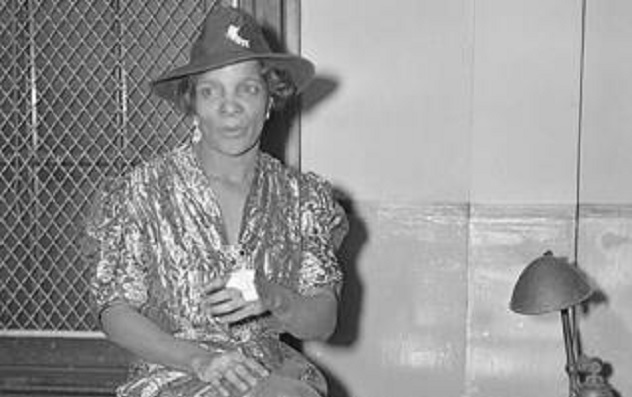
Stephanie St. Clair was a French-African woman known to many as “Queenie.” She immigrated to Harlem in 1912, and in 1922, she used $10,000 to open her own numbers bank. This was little more than an illegal street lottery, so she enlisted the infamous street gang, the Forty Thieves, for protection. These men had such a vicious reputation that not even the mobsters of New York would attempt to muscle them.
Craving more control as her earnings began to grow, she soon branched off from the Forty Thieves to start her own gang. Within a year, she ran an organization of 50 people, including legendary Harlem gangster Bumpy Johnson. In 1923, she was worth more than $500,000—almost $7 million once adjusted for today’s inflation.
However, as she continued to rake in such large amounts of money—north of $200,000 a year—Prohibition was ending, and the Great Depression was taking form. Many of New York City’s mob bosses saw their profits fall dramatically as the people that they were extorting were becoming poor. Naturally, they wanted in on St. Clair’s huge pot. Infamous mobster Dutch Schultz waged war on St. Clair in one of Harlem’s bloodiest gang showdowns in its history. By the time it was over, more than 40 people were murdered.
St. Clair felt that the police were assisting Schultz in their feud, leading her to take out many advertisements in Harlem newspapers accusing them of corruption. This drew the ire of law enforcement, and she was arrested. When she went to trial, she exposed the large number of officials she had been bribing for protection and turned a blind eye to her dealings. Several policemen were stripped of their badges as a result.
Eventually, Queenie no longer had the protection or manpower to withstand the onslaught from the mobsters. She reluctantly agreed to sign a truce that transferred control of her numbers operation—including all profits for the year—over to Schultz and the Italian mafia. This effectively put her out of business. SHe died in Harlem in 1969.
4Raffaela D’Alterio
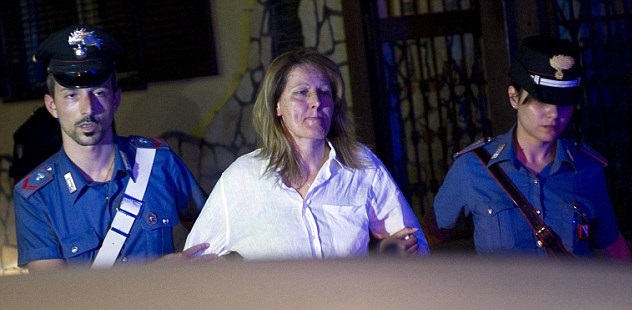
Raffaela D’Alterio is an Italian Mafia godmother who was the leader of a faction of the Camorra family. Originally a modest housewife in Naples, she entered the mob life when her husband, Nicalo Pianese, was riddled with bullets and killed in 2006. D’Alterio took over the large-scale operations of her husband’s crime syndicate.
Extortion, counterfeit money production, and drug trafficking were all fair game with D’Alterio at the helm. After surviving gunshots in a homicide attempt, she was bestowed the nickname “Miconia”— or “The Big Female Kitten”—since she seemingly had nine lives.
She was also highly enterprising. She built powerful ties with other Camorra factions that infamously deal in counterfeit goods, waste disposal, and construction. Italian authorities estimate that they generate up to $218 billion a year.
In 2012, authorities raided the homes of members of the D’Altorie syndicate. They arrested her and 65 members in a large takedown operation. In addition, law enforcement seized roughly $20 million in cars and properties during the raid.
3Rosetta Cutolo
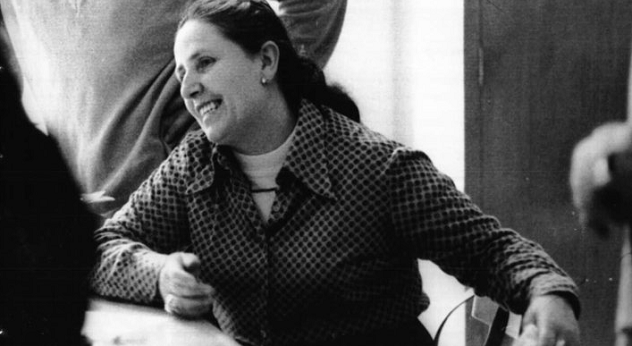
Born in 1937, Rosetta Cutolo is the older sister of former Cammora boss Raffaele Cutolo, who also headed the Nuova Commora Organizzita (NCO). Raffaele would eventually become incarcerated and, feeling that his sister Rosetta was the only person he could trust, left the day-to-day operations of his crime family to her.
Completing tasks delegated to her by her brother through prison conversations, Cutolo soon became the face of the NCO and the true power behind the family. Rosetta negotiated cocaine deals with South American drug cartels, attempted to blow up the local police headquarters, and was the inspiration for Corrista, a movie loosely based on her life.
Bringing in billions of dollars, the NCO had their hands in everything from politics to waste management. They were even part of the country’s milk, fish, and coffee trades. Rosetta Cutolo would hold her position for 15 years, becoming one of the most powerful women ever to head a criminal organization. She was so successful, she purchased and lived in a massive 365-room castle.
A large-scale law enforcement raid in 1981 led to Cutolo’s downfall. She was able to sneak out of a secret entrance and remained a fugitive for 12 years. In 1993, at age 57, police finally found her hideout. Cutolo complied with no resistance, saying that she was tired of running. She was charged with Mafia association and after her lawyer got her acquitted on nine murder charges, sentenced to nine years in prison. Her sentence was later reduced to five years.
2Maria Licciardi
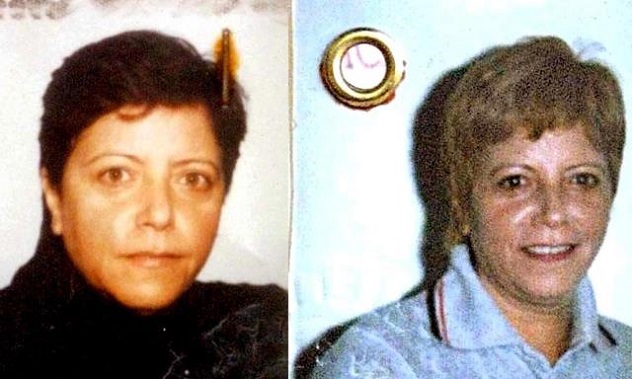
Sister of Secondigliano Alliance (SA) cofounder Genaro Licciardi, Maria Licciardi, rose to power after both her brothers and husband were killed. She was a natural and immediately ran SA operations with great impunity. She was so powerful that she earned the nickname “Boss of Bosses.”
The primary areas of control and income for the group were extortion and drug trafficking. She largely expanded these through a coalition with the Lu Russo clan. However, she greatly differed from her male predecessors in one huge area—she supported prostitution. Before Licciardi, there was an unspoken rule among the mobsters that women’s bodies were not to be sold. She had no such hangup, however, since prostitution rings were very profitable. However, they were run savagely under her watch. The women were often drugged 24/7 and murdered once they got too old to be profitable.
Because Licciardi played the role of the good girl by giving sporadic handouts and jobs to people in the Naples area, she and the SA were very well-liked. But the coalition that she formed with the La Russo clan would ultimately lead to her downfall. In 1999, a shipment of pure heroin was so potent that Licciardi feared that it would kill the SA’s customers and negatively affect her bottom line. The La Russo family, driven by greed, distributed the heroin anyway and killed several people—11 in one month alone.
This rash of deaths resulting from heroin drew the heat of law enforcement and caused many of her constituents to be arrested in subsequent crackdowns. The La Russo Clan broke their alliance, and the two factions declared war on one another. There were car bombings, and bazookas were fired in the streets.
After more than 120 people were killed by the feuding, Licciardi went into hiding with the police hot on her trail. Even her hideout was lavish—a huge attic in an abandoned warehouse with marble flooring and a whirlpool.
Feeling the pressure from the investigations, Licciardi had the district attorney’s office bombed to make them back off. Unfortunately for her, they persisted even more stringently. Two years later, they were finally able to nab Licciardi on several federal charges. While imprisoned, it is speculated that she is still running the organization and even calling hits when needed. In 2009, Licciardi was released from prison after almost 8 years. In 2019, she managed to escape from a huge anti-Camorra operation against the Secondigliano Alliance, becoming a fugitive. On July 12, 2019, the Court of Naples annulled the preventive detention against Licciardi, sharing the legal questions raised by her lawyer, Dario Vannetiello. Licciardi is considered a free woman.
1Griselda Blanco
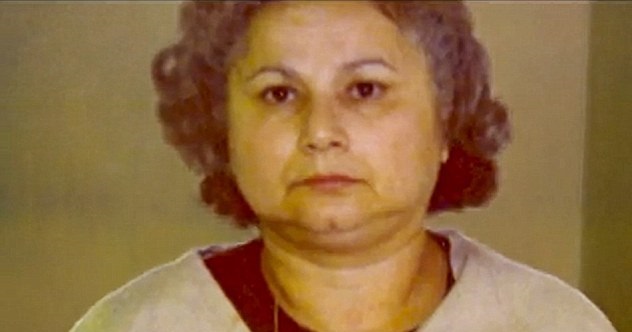
The original cocaine godmother, Griselda Blanco, became a national icon after the release of the 2006 documentary Cocaine Cowboys. This film was loosely based around her life and dealings within the Medellin drug cartel. It is estimated that she brought in $80 million per month during her short-lived career in the ’80s.
What separates her from other female crime lords is that none of the others seemed to have her insatiable bloodlust. She committed her first murder when she was 11 years old, killing a kidnapped young boy after his family failed to pay the ransom. She even killed her three ex-husbands, which earned her the title “Black Widow.” Blanco was ultimately implicated in over 200 murders.
The murder of one of her Colombian supplier’s nieces would turn the Medellin cartel against her, and there were suddenly many open attempts on her life. In addition to this, she was also evading law enforcement because of all the carnage that she was wreaking in Miami. She was incarcerated in 1985 in connection with three homicides but was released in early 2004 due to technicalities and errors by the prosecution. Authorities deported her back to Colombia, where she was gunned down in 2012.
When he’s not racing a 10-second car at your local drag strip or indulging in the pleasures of bacon, Elliot Rosenhaus finds time to write.
